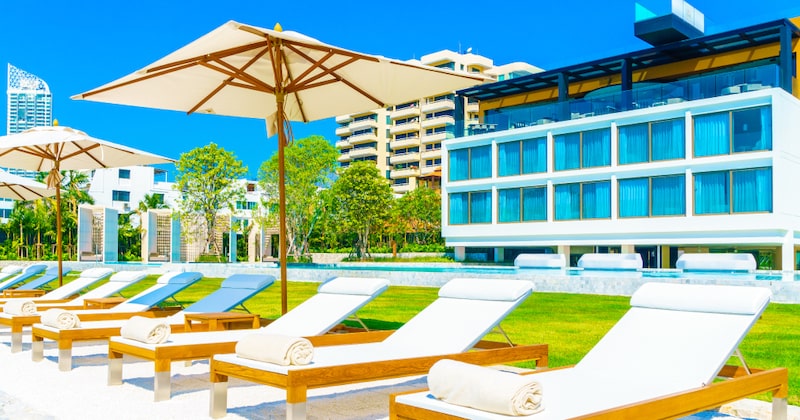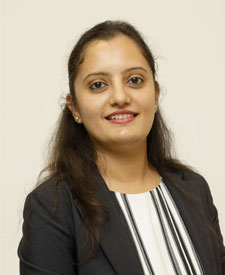Goa – India’s one of the most preferred tourist destinations witnessing Hospitality and Real Estate developments
- Goa has been one of the preferred tourist destinations by the Indians since the late 1970s. Until the year 1998, connectivity to Goa was limited – Vasco De Gama Railway Station (part of South-western Railways) was the only railway station serving the state of Goa. Airport at Dabolim connected largely to the metro cities of India.
- Between 1970s to early 2000 tourist activities in Goa were around Panjim – the capital city of the state. Early hospitality real estate developments included commencement of Taj Fort Aguada & Spa in the year 1974. During 1970 – 1995, locations of Panjim, Miramar, Calangute, Candolim started witnessing hospitality real estate developments with the inflow of tourists – on account of its proximity to Panjim and historic tourist spots – Bom Infant Jesus Church, Fontainhans, Dona Paula, Fort Aguada to name a few.
- In the year 1998, completion of Konkan railways led to opening of Madgao Railway Station in South Goa which led of growth of hospitality real estate developments along Utorda, Benaulim, and Colva in proximity to the Madgao town as preferred tourist locations.
- With time, tourism expanded across other locations in both North & South Goa – Baga and Vagator towards North and Canacona and Agonda towards South.
- With the announcement of the new airport at Mopa in North Goa, locations of Assagoa, Moira, and Siolim started witnessing real estate development of vacation rental homes.
- Completion of Mopa Airport at North and expansion of the highway connecting North and South Goa are expected to boost tourism in the state.
- Today with close to 7 million visitors annually, Goa is one of the most preferred tourist destinations by the domestic travellers. The state has matured infrastructure in terms of hospitality and real estate developments and is preferred by solo, group, leisure, and business travellers.
- Goa is divided into two districts – the North Goa and the South Goa. Despite being part of the same state, both these districts vary in terms of arrival of the tourists, type of hospitality real estate developments, infrastructure, duration of stay, and tourist activities.
Hospitality and Real Estate Demand Drivers
A. Tourist Activities
- North Goa accounts for 70 per cent of the total tourist arrivals in the state of Goa. North Goa is known for its Baga – Candolim – Calangute (BCC) circuit. The region is known for its night life, weekly markets, water sport activities, and restaurants. Arpora Market is one of the oldest flea markets in Goa. Besides, Anjuna Flea Market, Mapusa Market, Mackis’s Night Bazaar, and Panjim, the capital of Goa does have some local markets, and malls as well.
- South Goa accounts for the balance 30 per cent of the tourist footfalls in Goa. South Goa is known for its secluded beaches with sparse activity. Some of the popular beaches in South Goa are the Butterfly, Palolem, Colva, Majorda, and Benaulim beaches. Towards the extreme South of the state are the Cancona and Angoda beaches. Gradually, water sports activity is gaining prominence in South Goa as well. The region is also known for its flea markets, namely the Colem, Palolem and Caculo markets. However, these are not pocket friendly like markets of North Goa but does offer exclusive Goan collections. The region is also known for Dudhsagar waterfalls and Bhagwan Mahaveer Wildlife Sanctuary (Mollem), Netravali Wildlife Sanctuary and the Cotigao Wildlife Sanctuary.
B. Hospitality Real Estate Developments
- North Goa accounts for 80 per cent of the total hotel inventory in Goa. The region has hotels starting from the budget category to the luxury category hotels. However, the region has very limited beach facing properties. North Goa has JW Mariott Vagator, The Westin Goa - Anjuna, The Novotel Candolim, Taj Vivanta Panjim and the Grand Hyatt at Bambolim.
- South Goa on the other hand is known for its upper upscale and luxury beach front properties. The region is known for large beach front properties namely the Taj Exotica Resort and Spa, Holiday Inn, The St Regis Goa, The Lalit Golf and Spa Resort, and the Zuri White Sands.
C. Type of travellers
- North Goa attracts both leisure and MICE tourists. North Goa is preferred usually by the first-time travellers to the state, group travellers [weddings and events]. The Sunburn Festival in Goa is usually held at North Goa.
- South Goa attracts both the leisure and business. South Goa offers significant large resorts as compared to North Goa – suitable for beach front weddings as well as MICE events. In terms of solo or couples, South Goa is preferred by the travellers that prefer to spend leisurely time at the resort and the beach.
D. Duration of Stay
- The average duration of stay in North Goa ranges between 3 and 5 days while in South Goa it is between 5 and 7 days.
E. Real Estate Developments
- Goa has always been a preferred tourist destination which was one of the factors driving the demand for Holiday Homes or Second Homes. The preferred regions included Panjim, Madgao, and Sancoale in proximity to both Panjim and the airport at Dabolim. The product type earlier was largely vanilla apartment or villa units with no assistance for short – term rentals. Read our detailed report on Handbook for Vacation Homes and Holiday Homes Business in India
- Announcement of the development at Mopa in North Goa led to emergence of Vacation Rental Properties. The Vacation Rental Homes in North Goa are preferred as an investment and lifestyle product wherein the owners rent out the properties on short – term rental basis. The areas which started witnessing early developments (between 2012 – 15) include Assagaon and Siolim in North Goa. Gradually, locations of Mandrem, Moira, Morjim and Pilerene are witnessing increased developments.
- Holiday homes in South Goa continue to be preferred as Second Homes or Vacation Homes where people prefer to spend an average of 3 months stay in Goa for self-use. Locations witnessing development of luxury vacation rental homes are Benaulim and Varca.
Goa is one of the most preferred tourist destinations of India by both the domestic and international travellers. The region has witnessed significant change over the years in terms of the tourist profile, average duration of stay, average daily spend and the type of hospitality and real estate developments. The state’s tourism has grown beyond its beaches, and it is preferred by the MICE travellers, wedding groups, as well as by the Solo travellers. Conducive policies by the State to promote tourism in leaner period and improving connectivity (newly operational second airport at North Goa) as well as connectivity within the state are likely to further strengthen the tourist footfall in the state in the coming years.
About the Author
![Dhara Shah]()
Dhara Shah
Dhara has over 17 years of experience in Real Estate Investment and Consultancy. She has executed deals worth USD 10 million and led the team on executing 100 valuation assignments in the last 3 years. Prior to joining Meraqi she has worked with Vestian, UGL Equis and BPCL. Dhara is B.E (Civil) from S.V.NIT, Surat M.Tech (Infrastructure Planning) from CEPT, Ahmedabad.

